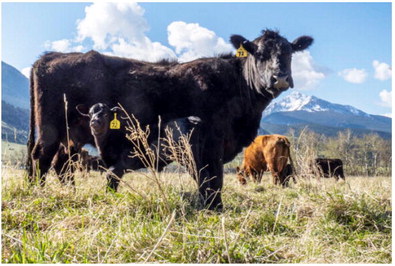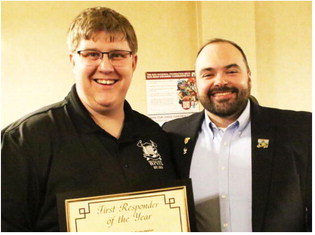Montana Climate Office Warns Of Water Shortage In State


The Montana Climate Office warned last week that historically low snow levels mean water shortages this year in several river basins — even with upcoming snow in the forecast. Farmers and ranchers already are preparing, and a dam operator that saw historic lows on Flathead Lake last year said the Montanans will need to be resilient in the face of a future that looks vastly differently.
Kyle Bocinsky, at the Montana Climate Office of the University of Montana, said people aren’t wrong when they say there’s another four weeks of the traditional snow season, but modeling shows snowpack will not be normal regardless.
“We’ve seen enough to know that it is highly unlikely, practically impossible, for us to make up the deficits we have right now and approach anything near normal,” said Bocinsky, director of climate extension.
The climate office pointed to the Blackfoot, Middle and South Forks of the Flathead, and Sun and Smith River basins as the most affected. “The other thing that our models say is even if we have normal snow accumulation for the next four weeks through the end of the snow season, we should be expected to have low or record low snowpack at what is supposed to be the peak of our season,” Bocinsky said.
He said people naturally want to believe “there’s still time” or “there’s still hope,” but the reality this year is that time has run out for a normal snowpack this season.
The model suggests the rest of the season through April 15 would need to see the highest snow accumulation on record to even hit normal in the Crown of the Continent, where they’re seeing some of the biggest deficits, he said.
The earlier people have accurate projections, the sooner they can prepare for and make decisions about drought, according to the climate office out of the W.A. Franke College of Forestry and Conservation at UM.
The office projects less water for agriculture and recreation, bad news for fisheries, and early closures for rafting and fishing.
Outside Conrad, farmer Cyndi Johnson said drought is not new, but she and her husband are paying attention to the varieties of cereal grains they plant.
“We want to make sure that they are as drought-hearty as they can possibly be,” said Johnson, with the Montana Farm Bureau Federation.
However, she said they are dryland farmers and don’t irrigate: “Folks who irrigate are going to be in tough shape if we don’t get some decent moisture.”
The more drought, the more people can anticipate higher food prices, she said. She also said their farm east of the Rocky Mountain Front has suffered from some level of drought the last three or four years.
“If it weren’t for crop insurance, we would not be in business,” Johnson said.
John Grande, president of the Montana Stockgrowers Association, said the longer- term forecast shows the El Nino weather pattern is shifting to a La Nina, “which is generally a more favorable climate pattern for this part of the country,” with cooler temperatures and more precipitation.
However, he said that doesn’t change present conditions. The organization also has a “drought hub monitor” at mtbeef.org where it collects details about drought conditions.
“It’s still too late for that snowpack, which is very important to us for reasons that spring rains can’t exactly make up for,” Grande said.
Pasturelands will offer less grazing for cattle, he said. Also, many ranchers who raise hay or grain crops rely on irrigation, so they’re figuring out whether they need to purchase feed earlier, for example.
“You have to have that snowpack in the mountains to have the streamflow for irrigation,” Grande said. “So there’s a huge effect here.”
He said ranchers are also worried about grasshoppers, which aren’t tied directly to moisture but are tied to whether Montana sees a cold winter. They flourish in warm weather.
“What happens if we have another bad year of grasshoppers that are eating away the crops and the pastureland?” Grande said.
Additionally, he said Montana has a shortage of water storage, which is an issue when the snowpack melts early. He said it’s difficult to build more, but he isn’t thinking of large-scale projects such as Fort Peck.
“Any small storage that helps the snowpack come out of the mountains at a slower rate is helpful to everyone, whether it’s us as ranchers or whether it’s wildlife and fisheries,” Grande said.
Last summer, the quick disappearance of the snowpack meant historically low water levels on Flathead Lake, a tourist destination.
Business owners and elected leaders called for more water out of Hungry Horse Dam at the top of the lake or less flow at the bottom to the Seli’š Ksanka Qlispe’ (SKQ) Dam, but dam operators are limited in the amount of flows they can allow.
Brian Lipscomb, CEO of the Energy Keepers managing SKQ Dam, said they are sacrificing winter generation to maintain some volume in the lake going into the spring, which means it likely can be filled even with the low snowpack.
However, if the snowpack disappears quickly, as it did last year, the results at Flathead Lake will be similar too. He said the change the past few decades has been the loss of glaciers in Glacier National Park and north in the mountains.
“The glaciers have shrunk,” Lipscomb said. “So you have very little storage, if you will, of snow into the later parts of summer, so it leaves quicker, and there’s nothing to draw on … It really was accentuated last year.”
Some modeling this year shows flows into the lake in early July will be lower than outflows, which means the drafting down of the lake again, he said.
As snow storage decreases in the years ahead and Montana experiences a more “rain driven system,” he said water management will need to change. And he said Western Montana needs to focus on how to be resilient going forward.
“The relatively stable hydrologic cycle that we’ve lived with our entire lives is being disrupted,” Lipscomb said. “And it’s going to get more disruptive going forward, not less.”


